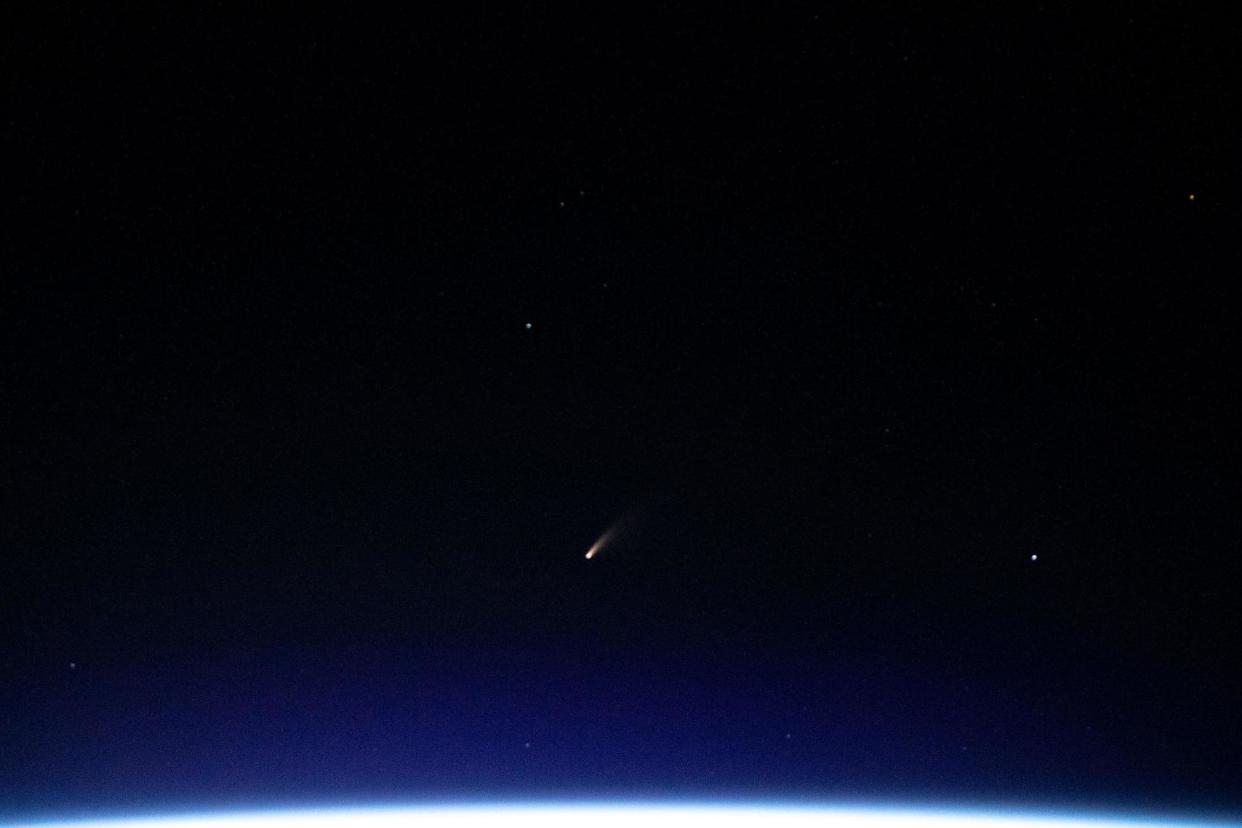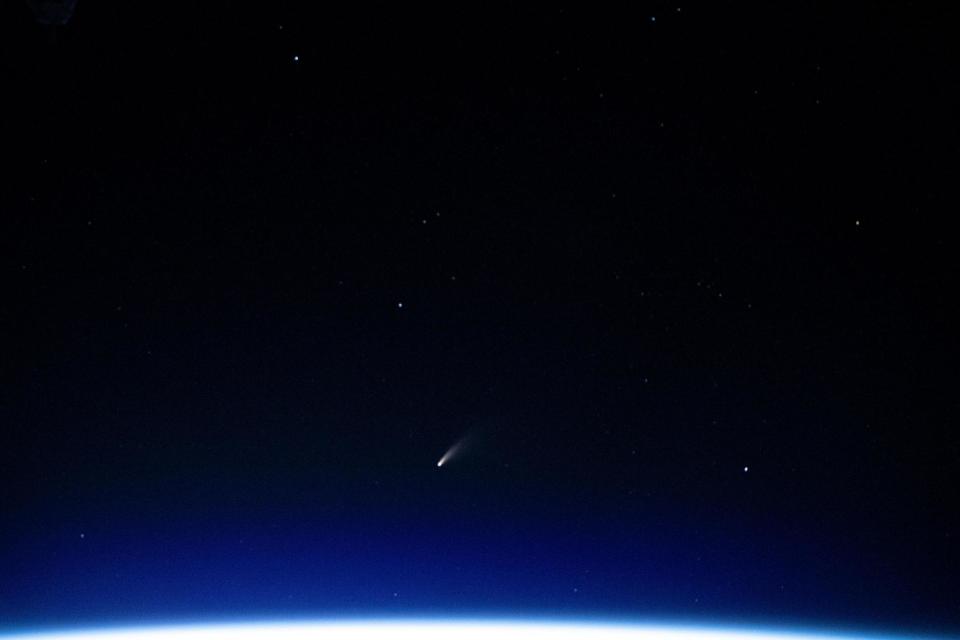Comet snapped by ISS astronauts may soon be visible to naked eye from Earth

Astronauts on the International Space Station were treated to the rare sight of a comet flying over Earth.
It is only the second time the celestial object, called Comet Neowise and archived as C/2020 F3, has been seen after first being spotted in March.
Nasa astronaut Bob Behnken tweeted that the spectacle looked like “fireworks”.
Since March, the brightness of the ice and rock ball has increased considerably and has been visible from Earth with decent binoculars as it makes an elliptical orbit.

But the best view is being enjoyed by astronauts on the ISS 250 miles above Earth, who snapped Neowise as they orbited above the Mediterranean between Tunisia and Italy.
The images were taken on Saturday night using a Nikon D5 DSLR camera and a 70-200mm lens, at a fast aperture of f/2.8 and 6,400 ISO equivalent film speed.
Last night's fireworks, for real. Because Science. #NEOWISE #comet pic.twitter.com/IKcJ1wLFAl
— Bob Behnken (@AstroBehnken)
Comets are frozen leftovers from the formation of the solar system and their streaking tails are caused by gases and dust that spew out when the lump passes close to the sun’s heat.
Their size ranges from a few miles to tens of miles wide, and there are currently 3,650 known comets, which can travel at several hundred miles per second.
Neowise - which stands for Near Earth Object Wide-field Infrared Survey Explorer - is due to make its closest approach to Earth on 22 July.
If its tail becomes increasingly bright the spectacle will be visible to the naked eye.
Read more
The Dragon has landed: SpaceX success as NASA astronauts step onto ISS
Stunning picture from space shows first meteor shower of 2020
Astronauts return to Earth after stint at International Space Station
NASA to open International Space Station to tourists from 2020

 Yahoo News
Yahoo News 
